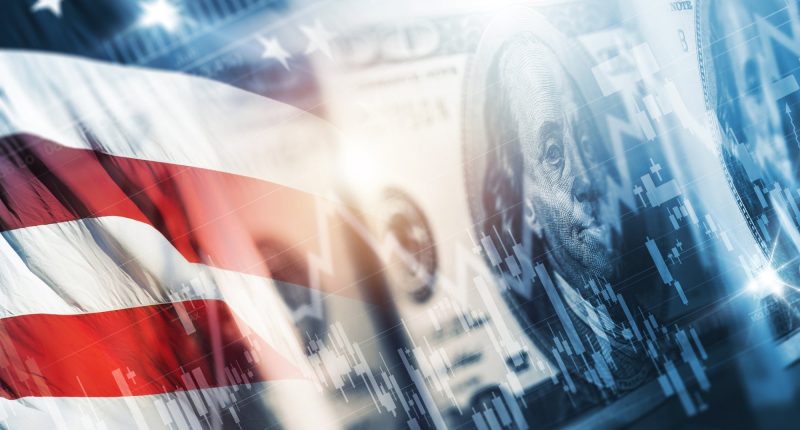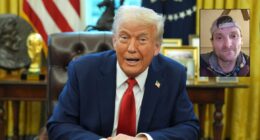Share this @internewscast.com
Opinions expressed by Entrepreneur contributors are their own.
Here we are in the middle of 2025, and with inflation easing somewhat to around 2-3%, there’s a prevalent question on everyone’s mind at kitchen tables across the nation: Can U.S. inflation ever make its way back to the Federal Reserve’s ideal target of under 2%?
This question is both reasonable and complex. Having observed economic cycles for two decades from the vantage points of Wall Street and Main Street alike, I’m here to help explain these monetary influences and share my insights on the economic path ahead for the United States.
What exactly is inflation, and why does 2% matter?
Let’s establish what we’re talking about before jumping to forecasts. Inflation isn’t merely about prices going up. It is the pace at which prices for goods and services increase, diminishing purchasing power. Officially, it is “a measure of how much more costly a set of goods and services becomes over a specific period, usually annually.” To put it simply, if you’re noticing higher prices on groceries, rent, fuel, and your Netflix subscription compared to last year, that’s inflation at work.
Central banks, like the U.S. Federal Reserve, target a 2% inflation rate because it signals a healthy, growing economy — not too hot, not too cold. Too high, and consumers suffer. Too low, and economies risk stagnation.
But this “Goldilocks zone” has been hard to reach lately. Post-pandemic stimulus, supply chain chaos, labor shortages and geopolitical tensions have all pushed inflation up. Even as things stabilize, price growth remains sticky. So, the idea of consistently low inflation feels more like a memory than a forecast.
The upside of low inflation (and why some fear it, too)
Let’s be clear: Low inflation has perks. It creates predictability for businesses, helps consumers save more and keeps interest rates down, which fuels borrowing and investment. When prices rise slowly and steadily, it helps everyone plan. If you know your rent and milk costs are creeping up around 2% a year, you can budget, negotiate salaries and invest confidently. The ECB explains it nicely: “When inflation is low, stable and predictable, it helps people and businesses to better plan their savings, spending and investment. That helps the economy to grow, in turn creating jobs and prosperity.”
But there’s a flip side. Extremely low inflation — or deflation — can stall growth. Companies may delay investment. Consumers might postpone purchases, expecting lower future prices. That’s why central banks don’t aim for 0%, but instead hover around that magic 2%.
What’s at stake for international businesses?
If the U.S. achieves sustained low inflation again, expect a domino effect.
For global companies operating in or exporting to the U.S., this could mean more stable input costs and consumer behavior. Currency values might shift, especially in emerging markets. Investment flows could be redirected, with more capital pouring into the U.S. due to its relative economic calm.
On the flip side, countries reliant on dollar-denominated debt might find themselves navigating a tighter monetary environment for longer. A low-inflation U.S. often means a strong dollar, which isn’t always great news for economies trying to service loans or boost exports.
If U.S. inflation is tamed, the Fed might hold or even cut interest rates sooner. Lower U.S. yields can prompt investors to search for higher returns overseas (say, in emerging markets) or into risk assets (stocks). Indeed, recent news shows soft U.S. inflation helped lift global markets — when April 2025 CPI came in cooler, U.S. stocks jumped and the dollar fell. For foreign companies, that can mean cheaper borrowing costs (since U.S. Treasuries set global rates benchmarks) and more capital flowing their way.
So, will inflation dip below 2% this decade?
Here’s the honest truth: It’s possible — but not likely without serious shifts in our economic situation. After careful analysis, I believe U.S. inflation will occasionally touch below 2% in the coming years, but staying there consistently? That’s a tough sell. We’re more likely looking at a “new normal” of 2.5-3.5% for several years, with occasional dips below 2% followed by rebounds above it.
The structural factors that previously anchored inflation have fundamentally shifted. Several reasons for caution exist. De-globalization, reshoring of manufacturing and energy transitions all introduce new cost pressures that simply didn’t exist in the hyper-globalized pre-2020 economy.
Building resilience into supply chains means sacrificing some efficiency — and efficiency losses translate to higher prices. Labor market tightness persists, with wages rising in ways unlikely to reverse completely. Structural labor shortages in key sectors maintain upward pressure on wages.
We’re also seeing sticky services inflation where prices in healthcare, education and housing continue growing steadily. America’s fiscal trajectory remains concerning, with persistent deficit spending across administrations. The sheer magnitude of government debt may eventually pressure monetary policy in subtle but important ways, making aggressive anti-inflation measures politically difficult. Geopolitical instability introduces additional complications as wars and political tensions continue to shock supply chains and create price volatility in key commodities.
Low inflation isn’t just about cheaper coffee or rent. It’s about confidence — among businesses, investors and consumers. While the Fed and policymakers have tools to push inflation down, the world has changed. Supply chains are shifting, labor markets are transforming, and economic power is becoming more multipolar.
If you’re an international business leader, the best play isn’t waiting for 2% inflation to return. It’s preparing for a new normal — one where resilience, agility and pricing power matter more than ever.
And maybe … ordering that $20 diner breakfast today before it costs $25 tomorrow.
As we are in mid-2025 and inflation has cooled off a bit (we’re talking around 2-3%), one question dominates kitchen tables alike: Will U.S. inflation ever return to the Federal Reserve’s cherished target of below 2%?
It’s a fair question. And a complicated one. Having spent 20 years watching economic cycles from both Wall Street and Main Street perspectives, I’m here to untangle this web of monetary forces and offer my take on America’s economic future.
What exactly is inflation, and why does 2% matter?
The rest of this article is locked.
Join Entrepreneur+ today for access.













